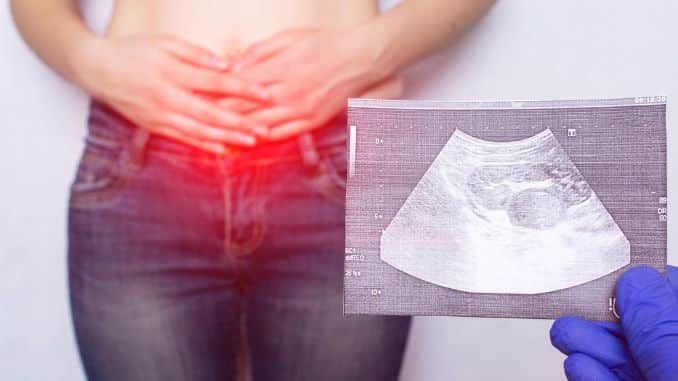
An inguinal hernia is a condition that occurs in a passageway called the inguinal canal located in your groin, the area between the lower part of your abdomen and your thigh. When this happens, you may notice a bulge on one side of your pelvic bone. Weakness in this area causes the abdominal tissue to push through an opening in your lower abdominal wall, resulting in this bulge. The weakness may be present at birth (congenital) or a result of normal aging muscle degeneration. For small hernias that do not cause any symptoms, there is no treatment necessary. However, we need to observe if it will get bigger over time. Also, Inguinal Hernia Exercises will definitely be helpful.
In severe cases of hernias, a surgical procedure is recommended to prevent possible complications in the future. If left untreated, it can result in more serious complications, including intestinal blockage, hernia incarceration, or hernia strangulation.
An Overview Of Inguinal Hernia
Inguinal hernias, also called groin hernias, are the most common type of hernia. This occurs when an abdominal tissue, such as intestines or belly fat, pushes through an opening in your lower abdominal wall due to weakness. It occurs in a passageway that runs down to both sides of your pelvis into your sex organs, called the inguinal canal.
There are two types of inguinal hernia — direct and indirect inguinal hernia.
-
Direct Inguinal Hernia
This type of inguinal hernia directly penetrates the wall of your inguinal canal. It occurs in older adults, which is often a result of a combination of natural age-related muscle weakness and chronic pressure on the muscle wall.
-
Indirect Inguinal Hernia
This type of inguinal hernia enters the wall of your inguinal canal through the top, which occurs due to a birth defect. In some cases, the opening to the fetus’ canal doesn’t properly close during the development inside the uterus.
What Are The Causes Of Inguinal Hernia?
Several factors can contribute to weakness or opening in the lower abdominal wall that allows the abdominal tissues to push through it.
These factors include:
- A weak spot or an opening that is present at birth or from a previous abdominal surgery
- A congenital disease that causes a difference in the strength of your connective tissue (collagen)
- Chronic sneezing and coughing
- Chronic strain to pee and poop
- Frequent strenuous exercise or laborious physical activity.
- Pregnancy and frequent carrying of children
- Prolonged standing for a period of time
- Chronic obesity that causes intra-abdominal pressure
- Normal age-related muscle and tissue degeneration
Men Or women? Who Does It Commonly Affect?
Inguinal hernia most commonly affects men, although it can also happen to women. This is because of anatomy. The male testicles begin just above the lower abdominal wall and descend through the inguinal canal into your scrotum. Over time, a pre-existing opening in the area where your testicle passes through can easily reopen, making it more susceptible to hernia. Sometimes, it doesn’t close all the way during the development inside the uterus. In women, those with connective tissue disorders can develop hernias where the connective tissues attach to their uterus to their inguinal canal.
What Are The Symptoms Of An Inguinal Hernia?
In some cases, there are no symptoms. However, some symptoms may come and go. The hernia may slide in and out of the opening, and you may feel it with certain activities. For some children, you may see a bulge in their groin area that could appear bigger if they cry and go away if they sleep. The bulge may not be felt or palpable to touch in an indirect inguinal area because it is tucked behind the muscle fibers.
Aside from these, you may also notice a bulge in the groin area on either side of your pubic bone which can go into the scrotum or labia, pressure or heaviness in your groin, pain in your groin, especially when straining, lifting, coughing and bending over, and a burning or pinching sensation that radiates down through your pelvis and leg.
How Dangerous Is It, And What Are The Possible Complications?
An inguinal hernia, if left untreated, can actually lead to life-threatening complications. This is because hernias can worsen over time. If it progressively weakens and becomes wider or enlarges, more abdominal tissue can push through it and become trapped. Once it traps, it can pinch or block your piece of an intestine and cut it off from its blood supply. This can cause pain and, in severe cases, can be dangerous. Other possible complications include strangulation and small bowel obstruction.
The surgeon cuts off the blood supply to a hernia that causes strangulation. This can lead to inflammation and infection of the abdominal tissue, which results in gangrene or tissue death, which can mean a medical emergency. A trapped and pinched part of your small intestine causes blockage in small bowel obstruction. This can result in being unable to poop or pass gas, causing abdominal pain, nausea, and vomiting.
How Is It Diagnosed?
A complete physical examination can easily diagnose an inguinal hernia. Your doctor will try to see and palpate the hernia. They may also ask you to cough or act as if you are pooping or passing gas so the hernia can be seen. They will also try to see if the hernia can be massaged back into place or if it is stuck in place (incarcerated).
If there are no hernias visible or if they can’t palpate it, imaging tests can be done, such as ultrasound, but if they want to be more specific, a CT (computed tomography) scan is recommended.
What Is The Treatment For Inguinal Hernia?
The best treatment for inguinal hernia is surgery. For an inguinal hernia that is not causing symptoms, your healthcare provider may observe and wait if it enlarges over time, then recommend surgery. But for severe cases, surgery is recommended right away.
For people with underlying health conditions that make surgery difficult, your healthcare provider may also recommend massaging your hernia back into place also called reduction. In this case, you might be required to wear a belt to hold the hernia in during certain activities such as Inguinal Hernia Exercises, which could stop it from progressing.
However, treatment will really depend on the case as it is on a case-to-case basis. Consult your healthcare provider so that both of you can weigh the risks, complications, and advantages together.
How Can I Prevent Inguinal Hernia?
You can reduce your risk of developing an inguinal hernia in several ways such as Inguinal Hernia Exercises. This focuses on reducing the possible wear and tear of your abdominal wall. However, for people who are born with congenital inguinal hernia, there’s no way to prevent it.
Here are some of the things you can do to prevent inguinal hernia:
- DO NOT lift heavy objects using your stomach or back. Instead, use your legs.
- DO NOT lift weights if you don’t have an expert professional to check your technique.
- For chronic coughing or sneezing, seek immediate treatment.
- For chronic constipation, seek immediate treatment and have some diet and lifestyle modifications to improve the condition.
- Reduce weight to decrease pressure in your abdomen
- Perform regular exercise that strengthens the core and abdominal muscles.
Can I Exercise With An Inguinal Hernia?
Although you have an inguinal hernia, it does not necessarily mean that exercise is prohibited. However, it is always better to consult your healthcare provider to see if the exercise suits your case or how to perform it correctly to avoid injuries.
Here are some exercises you can do to cope with Inguinal Hernia:
1. Pillow squeeze
Lie on your back on the floor with your knees bent and feet flat on the floor. Place a pillow in between your thighs. Inhale, then exhale. While exhaling, slowly squeeze the pillow using your thighs and hold this for 3-5 seconds before relaxing again. Repeat this 10 times, 1 set.
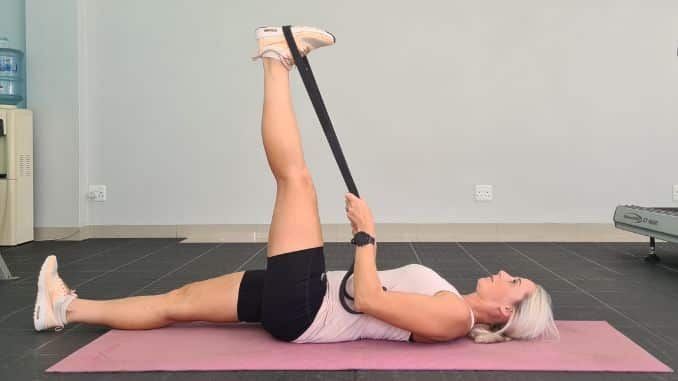

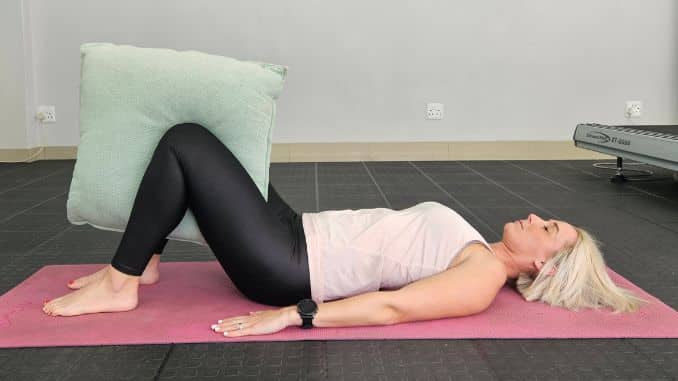
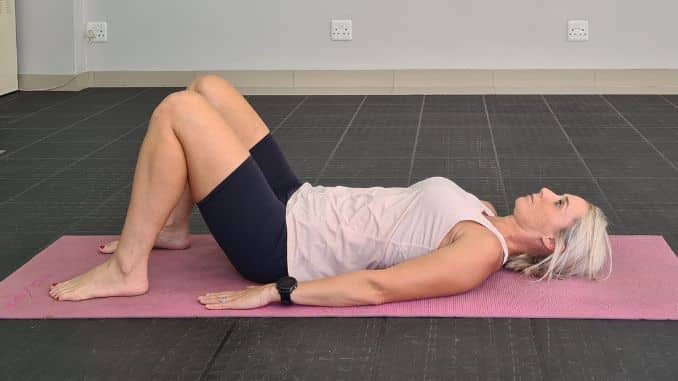
2. Glute Bridge
Lie on your back on the floor with your knees bent and feet flat on the floor, hip-width apart, and arms on your side with palms facing down. Raise your waist area while keeping your arms resting on the floor for support, and make sure that your shoulders, hips, and knees are aligned, then inhale. Exhale, then lower your waist area to return to the starting position. Repeat this 10 times, 1 set.
 |
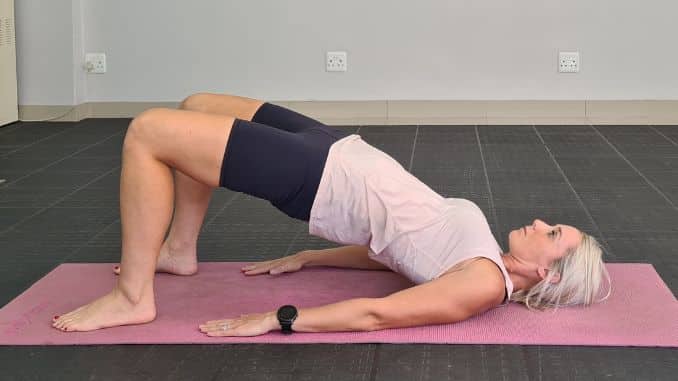 |
3. Hamstring stretch
Lie on your back on the floor with your knees bent and feet flat on the floor, hip-width apart. Raise one leg up while keeping the other leg bent. Wrap a towel around the balls of your foot and hold both ends of it. Then pull the towel towards you until you feel a gentle stretch on your hamstrings. Hold this position for 30 seconds before relaxing it and returning it to the starting position. Repeat this 3-5 times, 1 set. Repeat on the opposite leg.
4. Knee Opening
For this Inguinal Hernia Exercises, lie on your back on the floor with your knees bent and feet flat on the floor, hip-width apart. Inhale, then exhale. While exhaling, open one knee down and bring it as close to the floor as you can, then bring it back to the starting position. Repeat this on the opposite knee. Repeat this 10 times, 1 set.
Outlook
Surgery may greatly help in treating inguinal hernia. Patients will be able to resume usual activities at home and work after surgery, but precautions such as not lifting objects more than 10 kilograms and avoiding straining during recovery and more, will be given. Sometimes, long-term lifestyle changes such as recovery foods are recommended as well as exercises to help prevent an inguinal hernia from recurring.
From now on, you no longer have to live with the dire consequences of poor digestion. You can finally obtain “gut health security” and enjoy your favorite foods, symptom-free all day long! The overall quality, health and strength of your gut governs the ability of your body to properly absorb the essential nutrients from the food you’re eating. Check out our 14-Day Digestive Health Quick-Start Program now!

